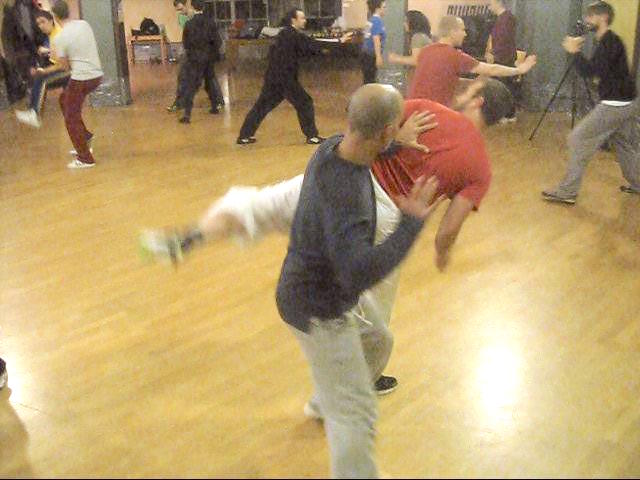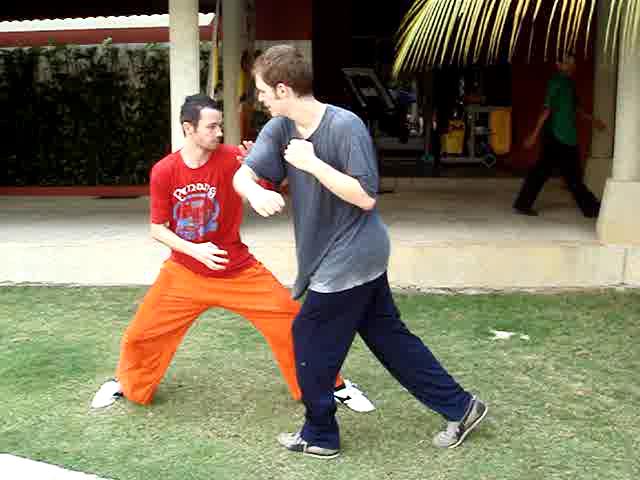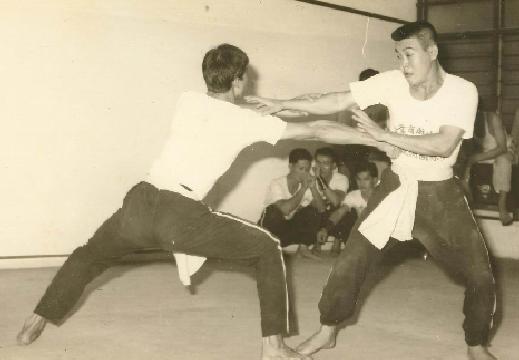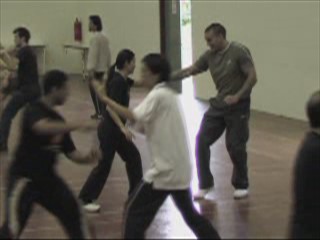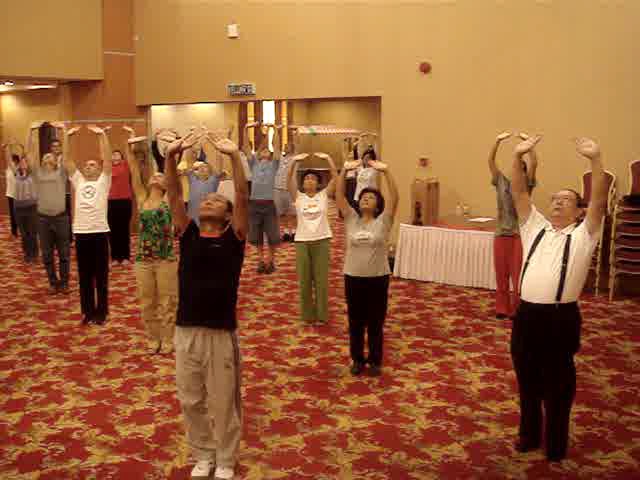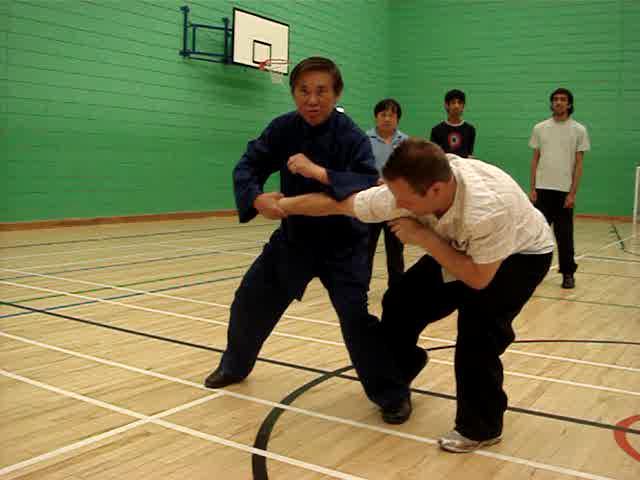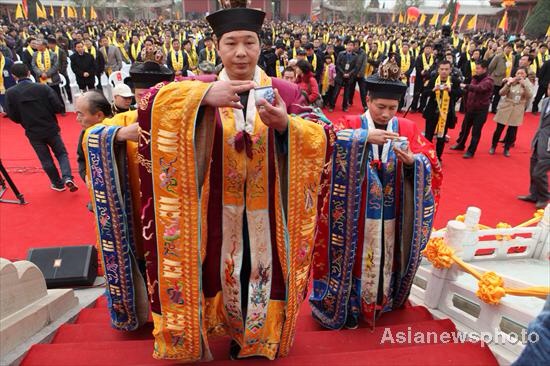
Grandmaster Wong in picturesque Switzerland
Question
You teach so many people, have written books, taught other masters, attained such a high level of awakening, what is your greatest wisdom from all your knowledge and experience? What would your fundamental message be to our readers?
Answer
Thank you for your compliments.
Once I asked my teacher, Sifu Ho Fatt Nam, what he considered the highest attainment in our training. He thought for a while, then replied.
“Sum seong si seng.”
This is Cantonese, the language my teacher and I used. Word by word the phrase means “heart thinks events materialize”. What your future is going to be is what you conceptualize it to be!
Although I was not matured enough then to grasp the deep meaning and full significance, even at that young age I could see this great wisdom rightly described all important aspects of my life.
When I was a small boy in primary (elementary) school, I heard of a great secondary (high) school called Penang Free School, described by its headmaster as the best school east of Suez. I was so fascinated that with a friend of my age we took a bus to have a look at this school, which in my boyish mind seemed so far, far away from my house.
I was not outstanding in my studies then and there was nowhere I could be admitted to this prestigious school. But I made up my mind to study there. Just before an important common examination for all primary schools, I was sick with influenza, which was uncommon for me since practicing Shaolin Kungfu two years ago from my first teacher, Uncle Righteousness.
So I could not attend kungfu classes, which I loved, nor go out to play. I was confined to my bed. But I could study my school lessons, which I hardly did before. Miraculously, what I studied came out in the important examination and I was graded to be among the top students of the state, and thus gained admission to the fabulous Penang Free School.
Although I was not studious in school, I had a very happy and colourful school life. So I wanted to be a teacher. While I was undergoing teachers’ training at the Malayan Teachers’ College in Kuala Lumpur, I met an exceptionally brilliant student who became my good friend at the college.
I knew my limitations, knowing that there was no doubt my friend would be the best student of the collage, I wanted to be the second best. And it turned out to be. When the final examination results were out, my friend and I were the first and second topping the list of all students.
Later when I continued my studies at university, while my university mates studied very hard, I spend most of my time playing Chinese chess, reading on books not related to my university studies and helping a childhood friend, who was then a famous kungfu master in Kuala Lumpur, teaching kungfu and Lion Dance. But I still want to do well in my university examination. I scored all As in my results. Heart thinks and events materialize.
I wanted to have a good and beautiful wife, a lot of lovely children and a happy family. I did – of course, I still do and will always do. Heart thinks and events materialize.
When I found that kungfu had deteriorated to a ridiculous level, I wanted to preserve its glory and greatness and spread its wonderful benefits to deserving students all over the world irrespective of their race, culture and religion. I made this wish at a time when it seemed impossible to do so. Now I am glad and grateful that I have succeeded.
Traditionally high-level chi kung, or nei kung which means internal art, is taught only to selected kungfu students who have proven their worthiness after many years with the master. I found that this traditional manner of teaching could not help those in need of it to overcome their so-called incurable diseases.
I wished to help these people, irrespective of their race, culture and religion, to regain good health. So I did the unthinkable, much to the opposition and chargin of many traditional masters. I opened high-level chi kung to the public and unlocked its secrets. Today, countless people have overcome their so-called incurable diseases after learning from our school, Shaolin Wahnam.
All these events illustrate the great wisdom taught to me by my teacher, Sifu Ho Fatt Nam – heart thinks, events materialize.
This great wisdom is also taught by ancient great teachers, and confirmed by the latest science.
The Buddha, for example, teaches that the most important cause of karma is thought. In other words, what your future will turn out to be is most influenced by what you think. In fact, the phenomenal world is the result of thought. Not only your future is the result of your thought, the phenomenal world itself is the result of what people think it to be.
This great truth is confirmed by the latest science. A famous scientist puts it in an interesting way. If you put a cat into a box with deadly poison, and close the lid of the box, whether the cat is alive or dead depends on whether you think the cat is alive or dead.
Another famous scientist asserts that when you see the moon in the sky, it is because you conceptualize the moon in the sky; if you do not think of it, there is no moon in the sky.
Scientists have confirmed that an electron is where it is because we conceptualize it to be where it is. Otherwise it is nowhere or everywhere – again depending on how we conceptualize it.
This great wisdom points to a greater wisdom. As heart thinks, events materialize, it is of utmost importance to think only of noble thoughts. This is not just for altruism, it is for your own sake.
When one thinks of bad things, bad things will happen to him. When he thinks of good things, good things will happen to him. When he thinks of evil, be becomes evil. When he thinks nobly, he becomes noble.
This is not superstition, and has nothing to do with religion. It is karma, which means cause and effect. Goodness will always result in goodness, evilness will always result in evilness, and the most important cause is thought.
This wisdom has been validated throughout centuries, and is now confirmed by science. If you want good things to happen to you, think of good things. If one has bad thoughts, even when he does not want bad things to happen to him, they will happen. It is not that he is punished by God or whatever term he calls the Supreme, but he gets the result of his evil mind. After all, the whole world is a result of mind.
This is the greatest wisdom from all my knowledge and experience – that the phenomenal, including the world we live in and various heavens many people aspire to go to in their afterlife, is a function of mind. The Supreme Cosmic Realtiy is undifferentiated, infinite and eternal, called by different peoples by different names, such as God, Brahman, Tao, Suchness, Original Face or the collapse of particles into universal energy.
But “greatest” is relative. What is greatest to some, may not be greatest to others. For those who want to live a happy, healthy, long life, which in practical terms means all people except fools and saints, the greatest wisdom is always to have noble thoughts for themselves and other people.
Evil or bad is what brings harm. Noble or good is what brings benefit.
When a friend is sick, for example, if you think, or worse, tell him that he has to resign himself to a life of taking medication, it is having evil thought. If you tell him that he can recover, it is having noble thoughts.
Please note that you are not telling him a lie. It is true that he can get well. A lot of people suffering from so-called incurable diseases and are supposed to die, have recovered and now lead healthy lives after learning chi kung from me or my certified instructors or chi kung healers.
Please also note that telling a person that he can recover does not necessarily mean he will certainly recover. In the same principle, everyone in our modern society can become a millionaire, but not everyone will certainly become a millionaire.
If you are not as happy as you feel you should be in your workplace or family life, and think it is your destiny, it is having an evil thought. If you think that your boss or your spouse, and not you, should improve your work or family life, it is also having an evil thought. If you think you can have a happier workplace or family life, and you, not your boss or spouse, are going to do something about it, it is having noble thoughts.
This is the fundamental message I would like to share with our readers. Regardless of whether we are a pauper or a king, living in a desert or a crowded city, just coming out of school or entering retirement, we have a choice. We can choose to have good thoughts or bad thoughts. Good thoughts will result in good things happening to us, bad thoughts will result in bad things. The choice is yours.
The above extract is reproduced from “Your True Nature: Wisdom of Living Masters” by Natalie Deane and Damian Lafont.

